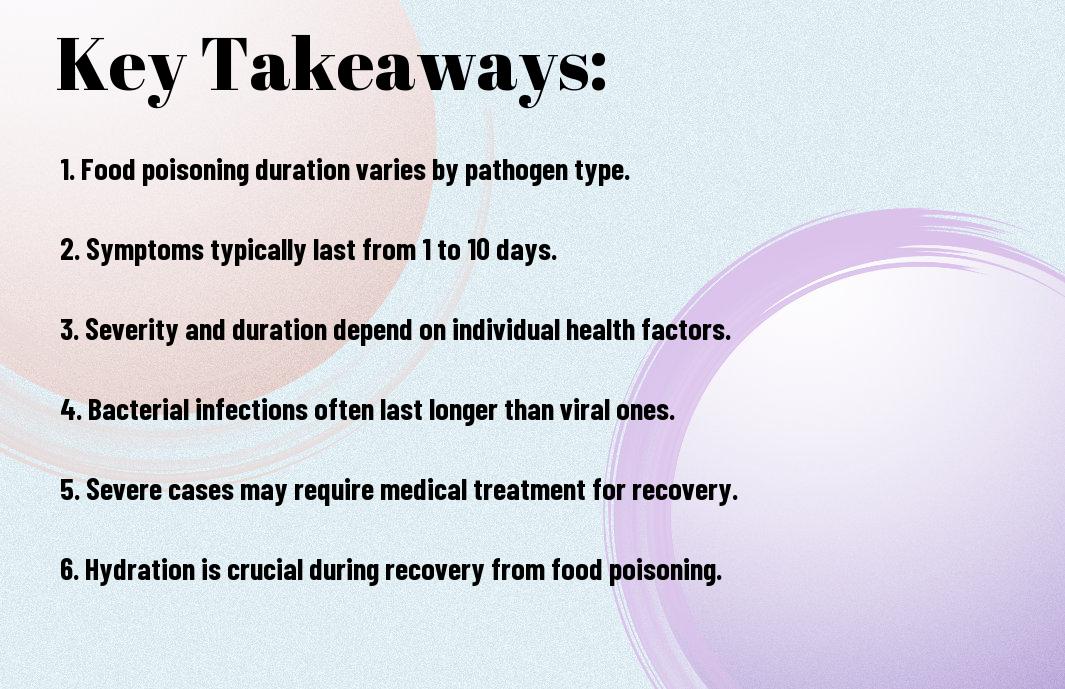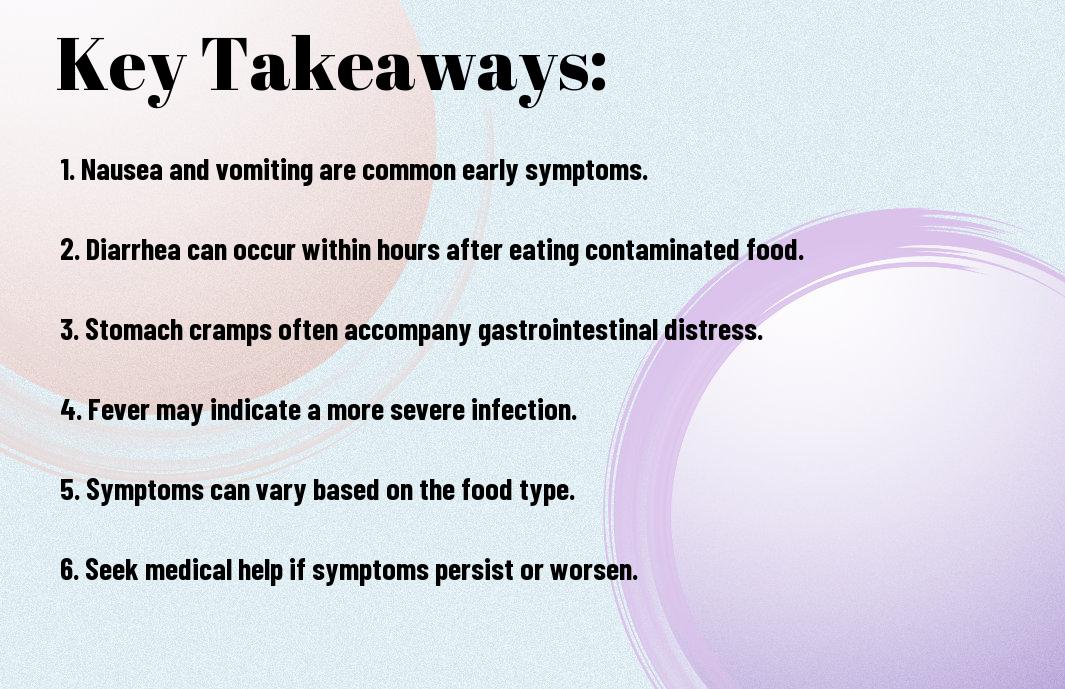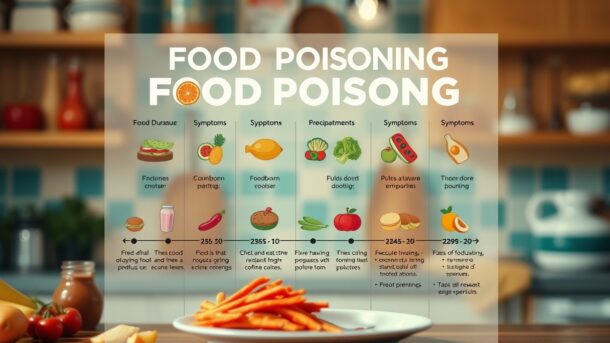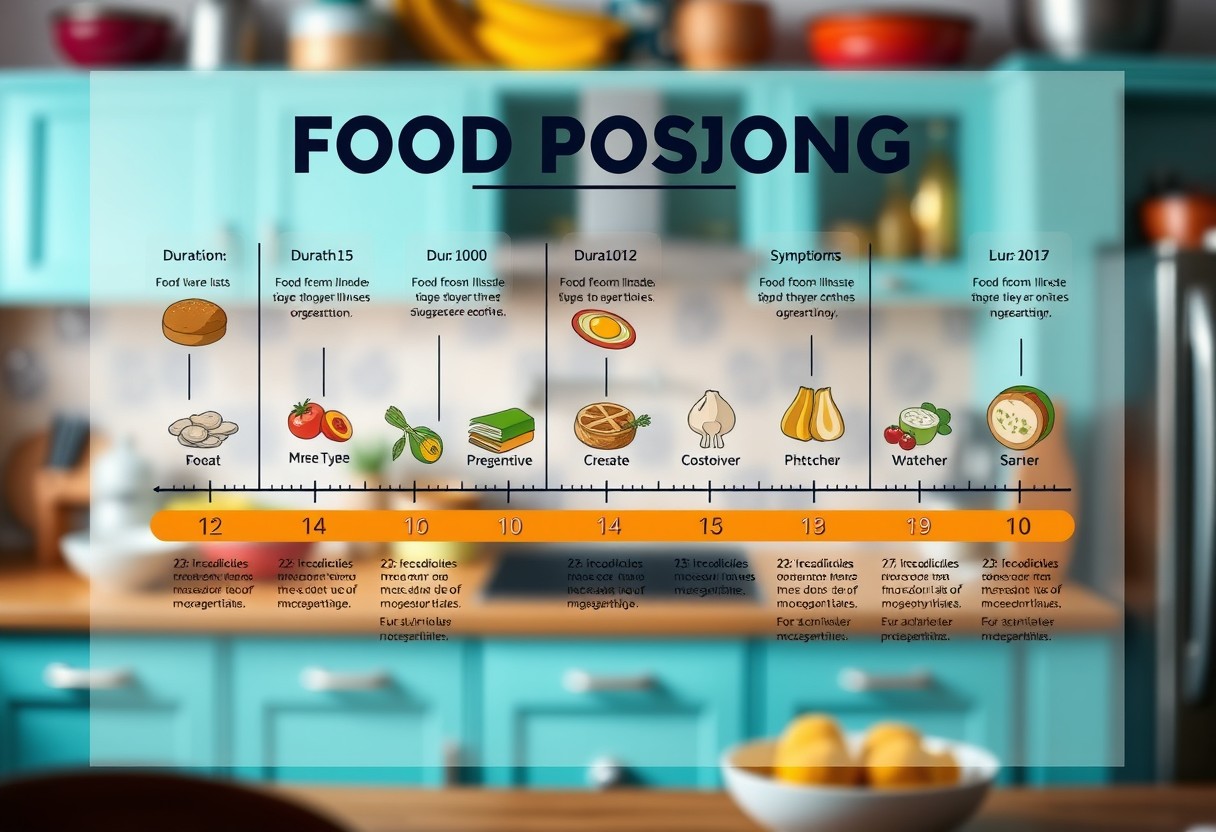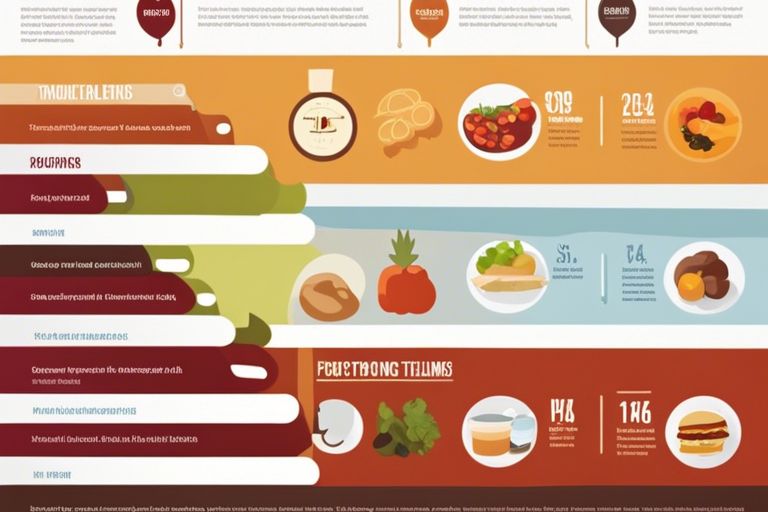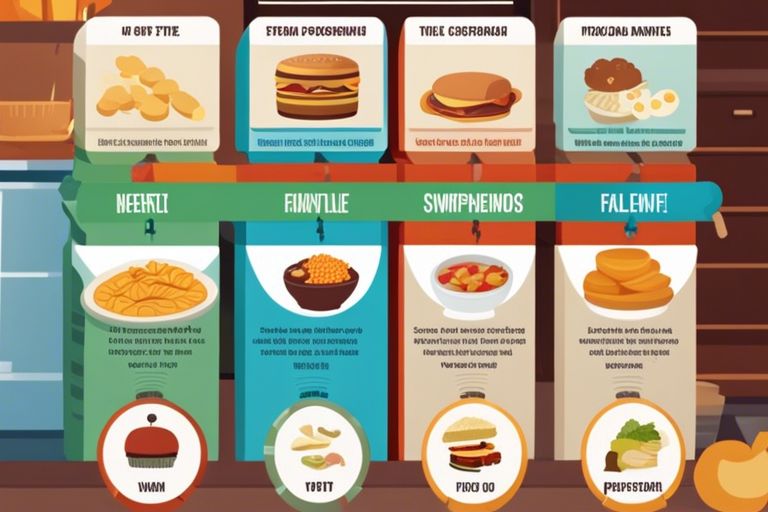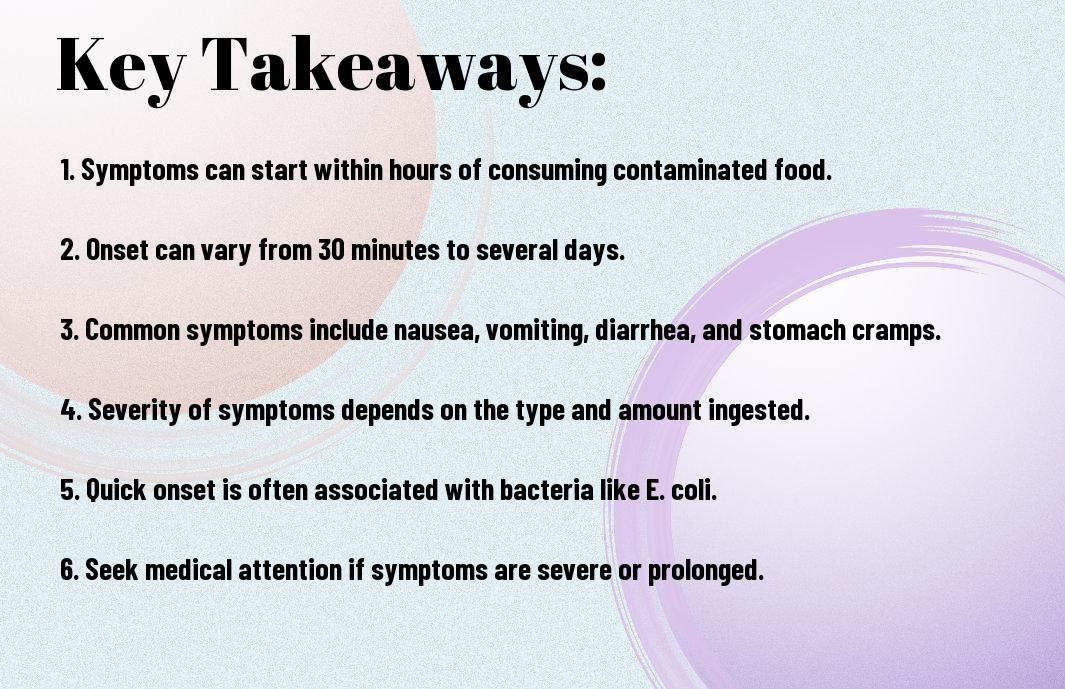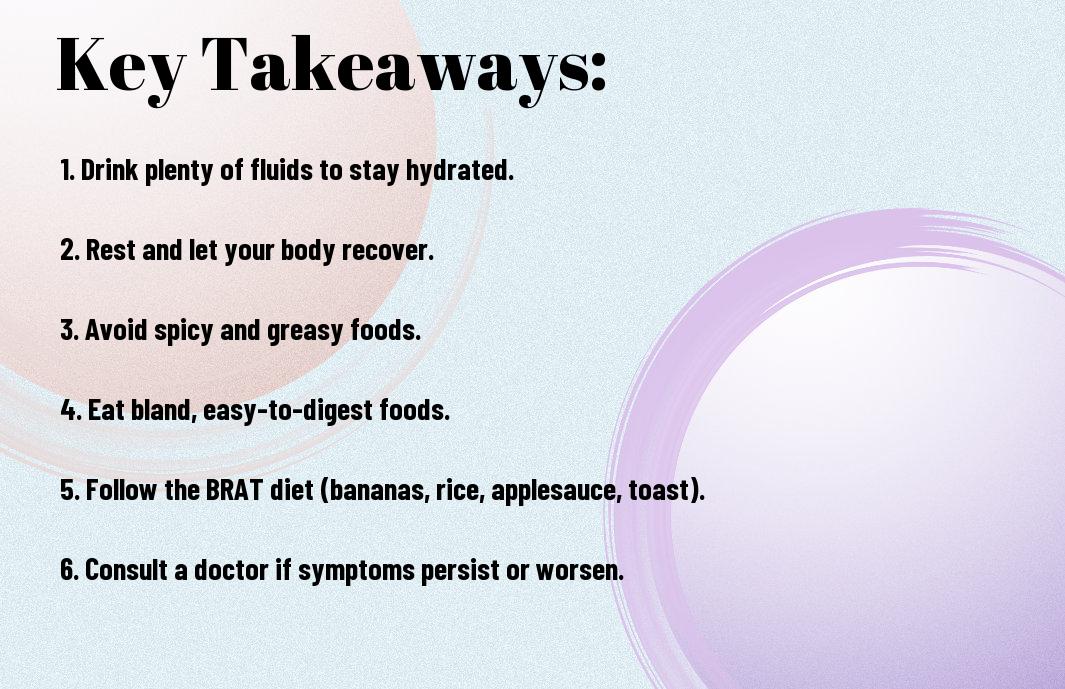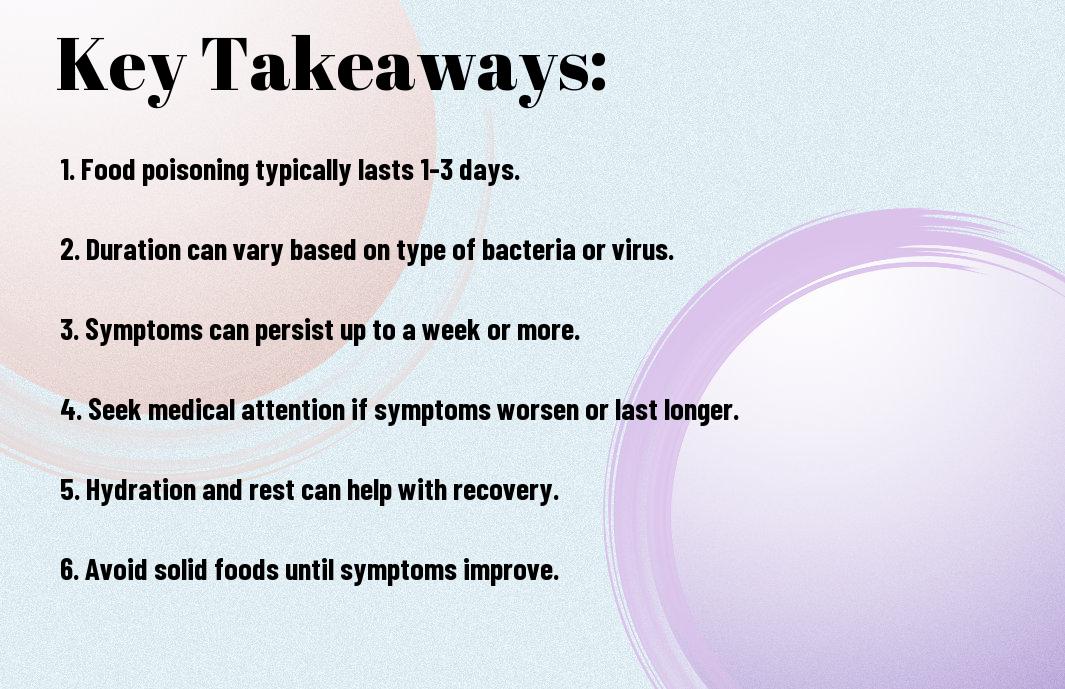Just like any illness, food poisoning can bring about a range of uncomfortable symptoms that may vary from mild to severe. You might experience abdominal cramps, nausea, vomiting, and diarrhea, all of which can contribute to significant discomfort. Understanding these potential effects and recognizing when to seek medical attention is crucial for your recovery. In this post, we’ll explore the pain associated with food poisoning, the symptoms to watch for, and what you can do to alleviate your discomfort.
Key Takeaways:
- Symptoms: Food poisoning can cause a range of painful symptoms, including abdominal cramps, nausea, and vomiting.
- Severity: The level of pain experienced varies depending on the type of bacteria or virus causing the food poisoning.
- Duration: Most food poisoning cases resolve within a few days, but symptoms can be particularly intense in the initial stages.
Understanding Food Poisoning
For many, food poisoning is an unpleasant experience that can lead to various health issues. This condition typically arises when you consume contaminated food or beverages that harbor harmful bacteria, viruses, or parasites. Understanding what food poisoning entails is crucial for prevention and quick recovery.
Definition of Food Poisoning
To be precise, food poisoning refers to an illness that occurs after eating food contaminated with pathogens or toxins. Symptoms can range from mild gastrointestinal discomfort to severe health complications, impacting your overall well-being. Recognizing the signs early is vital for effective treatment.
Common Causes
Poisoning can stem from various sources, commonly including improper food handling, undercooked meals, or expired ingredients. Inadequate refrigeration and unsanitary kitchen conditions also contribute significantly to the risk. Being aware of these causes can help you make informed decisions about your food consumption.
Food contamination often occurs due to a lack of hygiene during food preparation or storage. Cross-contamination can happen when raw ingredients, such as meat and vegetables, come into contact with one another improperly. Additionally, consuming unpasteurized dairy products, raw seafood, or fruits and vegetables that haven’t been washed properly can expose you to potentially harmful organisms. Awareness of these common causes can empower you to take proactive steps to minimize your risk of food poisoning.
Symptoms of Food Poisoning
Some common symptoms of food poisoning can surface within hours or days after consuming contaminated food or drink. These symptoms can vary in severity and duration. For a detailed list, refer to the 10 Signs and Symptoms of Food Poisoning.
Gastrointestinal Symptoms
Food poisoning often leads to various gastrointestinal symptoms, such as nausea, vomiting, diarrhea, and abdominal cramps. These symptoms occur as your body tries to expel the harmful pathogens you’ve ingested.
Systemic Symptoms
To add to gastrointestinal distress, food poisoning can trigger systemic symptoms. These can include fever, chills, and fatigue, which indicate that your body is fighting off the infection caused by contaminated food or beverage.
Symptoms like fever and chills may occur as your immune system responds to the toxins and pathogens in your body. You may also experience muscle aches and a general feeling of unwellness, signaling that your body is working hard to restore its balance.
Duration and Severity of Symptoms
Poisoning from contaminated food can lead to symptoms that last anywhere from a few hours to several days. The duration and severity depend on various factors, including the type of bacteria or virus involved and your overall health.
Symptoms can vary greatly depending on the individual and the specific cause of the food poisoning. Some people may experience mild discomfort, while others could find themselves facing severe illness requiring medical attention. Understanding how long you can expect your symptoms to last can help you gauge when to seek help.
Systemic symptoms can heighten the overall impact of food poisoning, making you feel like your entire body is affected. Pay attention to how your symptoms evolve and do not hesitate to consult a healthcare professional if you find them overwhelming or enduring.

Pain Associated with Food Poisoning
All individuals experience food poisoning differently, and pain is one of the most common symptoms. Understanding the types of pain you may encounter can help you better manage your condition.
Types of Pain Experienced
One prevalent aspect of food poisoning is the variety of pain sensations you may experience. Your discomfort can range in intensity and type, affecting your overall well-being.
| Type of Pain | Description |
|---|---|
| Abdominal Cramps | Sharp, sharp muscle contractions in the stomach area. |
| Nausea | An intense feeling of wanting to vomit, often coupled with discomfort. |
| Headaches | Pain or discomfort felt in the head, potentially linked to dehydration. |
| Diarrhea Pain | Achiness or cramps caused by bowel movements. |
| Muscle Aches | Generalized soreness throughout the body, which can accompany food poisoning. |
Perceiving the intensity of these painful experiences is imperative for determining treatment options.
Factors Influencing Pain Levels
Pain experiences can be highly variable and are influenced by several factors. Assessing these elements is crucial for understanding your condition better.
- Your age and general health status.
- The specific foodborne pathogen involved.
- The severity of the exposure at the time.
- Individual pain tolerance and sensitivity.
- Time elapsed since symptom onset.
Recognizing these factors can aid in evaluating the severity of your symptoms and the need for medical attention.
Pain levels in food poisoning can fluctuate widely for each person. Various elements, including your pre-existing health conditions, can also influence how you perceive pain. If you already have digestive issues, you may be more sensitive to the discomfort caused by food poisoning. Additionally, your emotional state and mental health can affect pain perception.
- Pre-existing conditions such as IBS or IBD.
- Your stress and anxiety levels.
- Hydration status, as dehydration can exacerbate discomfort.
- Presence of any other concurrent illnesses.
- Your medication use and interaction with symptoms.
Recognizing these influences can help you take proactive measures to alleviate pain during recovery.
Comparison with Other Medical Conditions
Pain associated with food poisoning can often be compared with discomfort from other medical ailments. Understanding these similarities can help you contextualize your experience.
Comparison of Pain Types
| Condition | Pain Type |
|---|---|
| Food Poisoning | Abdominal cramps, headaches, diarrhea pain |
| Gastroenteritis | Similar abdominal pain and nausea, often accompanied by fever. |
| Appendicitis | Localized abdominal pain that may worsen over time. |
| Irritable Bowel Syndrome (IBS) | Cramps, discomfort, and bloating triggered by certain foods. |
| Peptic Ulcers | Sharp stomach pain that may vary with food intake. |
Experienced pain from food poisoning might closely resemble symptoms from these other conditions, making it imperative to distinguish between them for effective treatment.
Pain associated with food poisoning shares some characteristics with other medical issues, emphasizing the need for careful monitoring. For instance, the intense abdominal cramps you feel might be similar to what someone with gastroenteritis experiences. However, the context of your symptoms plays a vital role. Distinguishing between these conditions aids in understanding whether further medical evaluation or treatment is warranted.
Comparison of Symptoms
| Condition | Common Symptoms |
|---|---|
| Food Poisoning | Nausea, vomiting, diarrhea, abdominal pain |
| Gastroenteritis | Diarrhea, vomiting, fever, abdominal cramps |
| Appendicitis | Abdominal pain, fever, vomiting |
| Irritable Bowel Syndrome (IBS) | Change in bowel habits, cramping, bloating |
| Peptic Ulcers | Burning stomach pain, nausea, bloating |
Prevention and Treatment
Your approach to preventing food poisoning involves understanding safe food handling practices and knowing when to seek medical attention. Effective prevention strategies can significantly reduce your risk of encountering foodborne illness, making it imperative to stay informed and vigilant.
Safe Food Handling Practices
To ensure your safety, always wash your hands before and after preparing food, cook meats to their recommended temperatures, and refrigerate perishables promptly. Additionally, avoid cross-contamination by using separate cutting boards for raw meats and fresh produce. These simple yet effective practices can help protect you from foodborne illnesses.
When to Seek Medical Attention
Prevention is key, but recognizing when to seek medical help is equally important. If you experience severe symptoms of food poisoning such as persistent vomiting, high fever, or dehydration, you should consult a healthcare professional immediately. Additionally, if symptoms last longer than 48 hours or if you are in a high-risk group such as pregnant women or the elderly, it’s crucial to get medical advice.
Safe handling of food and taking prompt action when symptoms arise can significantly improve your well-being. If you find yourself experiencing severe discomfort from suspected food poisoning, don’t hesitate to reach out to healthcare providers for guidance and treatment options. Your health and safety should always come first.
Conclusion
As a reminder, food poisoning can indeed be painful, often causing symptoms such as stomach cramps, nausea, and diarrhea that can lead to significant discomfort. It’s crucial for you to recognize these signs and take appropriate action, such as staying hydrated and seeking medical attention if necessary. By being mindful of food safety practices, you can reduce your risk of experiencing the painful effects of food poisoning in the future.
FAQ
Q: Is food poisoning painful?
A: Yes, food poisoning can often be painful. Many individuals experience symptoms such as stomach cramps, abdominal pain, and general discomfort, which are commonly associated with gastrointestinal distress. These sensations can vary in intensity based on the type of contaminant and individual health factors.
Q: What are the common symptoms of food poisoning?
A: Common symptoms of food poisoning include nausea, vomiting, diarrhea, stomach cramps, and fever. While some individuals may experience mild discomfort, others may endure severe pain and cramping as the body reacts to the harmful bacteria or toxins in contaminated food.
Q: How long does the pain from food poisoning last?
A: The duration of pain from food poisoning often varies depending on the severity and type of infection. Typically, symptoms can last anywhere from a few hours to several days. In most cases, pain and discomfort improve as the body eliminates the toxins or pathogens, usually within 24 to 48 hours for most mild cases.
Q: Are there any treatments for alleviating pain caused by food poisoning?
A: Yes, treatments for alleviating pain from food poisoning generally focus on staying hydrated, resting, and consuming bland foods as the gastrointestinal tract recovers. Over-the-counter medications may help relieve stomach cramps and discomfort. However, it is advised to consult with a healthcare professional, especially in severe cases of food poisoning.
Q: When should I seek medical help for food poisoning pain?
A: You should seek medical help if you experience severe abdominal pain, persistent vomiting, high fever, signs of dehydration, or if symptoms last longer than 48 hours. It’s necessary to obtain medical advice, particularly if you are part of a vulnerable group, such as young children, the elderly, or individuals with weakened immune systems.


